Introduction
Photography, as an art form, has evolved into various specialized genres, each serving a distinct purpose. Two of the most prominent fields within photography are fine art photography and commercial photography. While both involve technical skill and creative vision, they differ significantly in their intentions, audiences, and processes. Understanding these differences is crucial, especially for photographers looking to pursue a career or define their artistic focus.
Fine art photography is often driven by personal expression, where the photographer’s primary goal is to create visually compelling images that communicate a deeper message, evoke emotions, or represent a unique perspective. These images are often showcased in galleries, sold as limited prints, or entered into art exhibitions.
On the other hand, commercial photography is more focused on meeting the needs of clients. The photographer’s role here is to produce images that promote products, services, or brands, following specific guidelines and business goals. Commercial photographers often work in advertising, fashion, product photography, and other industries where images are crafted to appeal to a target market.
This blog post will delve into the key differences and overlaps between these two photography fields, helping you better understand which path may align with your creative and professional aspirations.
Defining Fine Art Photography
What is Fine Art Photography?
Fine art photography is a form of visual art where the photographer creates images that go beyond simply capturing a scene or subject. Instead, it focuses on conveying the photographer’s personal vision, emotions, or artistic concepts. The primary goal of fine art photography is to evoke a deeper meaning, provoke thought, or stir emotions within the viewer. Unlike other forms of photography, which may focus more on documentation or utility, fine art photography is inherently expressive and interpretive, often blurring the lines between reality and imagination.
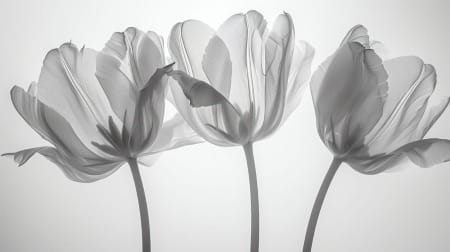
The intention behind fine art photography is key—it’s about what the photographer wants to communicate. Whether it's abstract, surreal, or rooted in reality, the images are crafted to represent more than just the physical appearance of the subject. The photographer typically exercises full creative control, with decisions about lighting, composition, color, and editing serving to support their artistic vision.
The Role of Conceptualization
A defining feature of fine art photography is the importance of conceptualization. Before even picking up the camera, many fine art photographers spend significant time developing a concept or theme. This can be influenced by various factors, such as personal experiences, social issues, or purely aesthetic concerns. The concept often dictates the entire creative process, from planning the shoot to post-processing.
For example, a fine art photographer might explore themes of identity, isolation, or beauty, using specific subjects or locations that emphasize these ideas. Whether it’s through subtle symbolism or bold, dramatic imagery, the photographer’s concept shapes the viewer’s interpretation of the work.
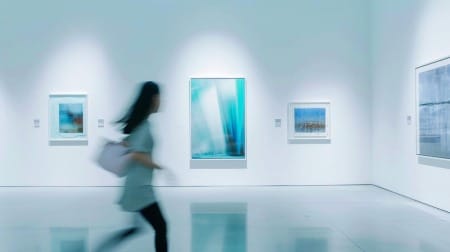
Exhibition and Audience
Fine art photography is primarily created for display in galleries, museums, or private collections. The audience for these works tends to be art enthusiasts, collectors, and galleries who appreciate photography as an artistic medium. Unlike commercial photography, where the audience is often broader and focused on consumption, fine art photography appeals to those looking for meaning, narrative, or beauty in a more abstract form.
Many fine art photographers produce limited edition prints of their work, enhancing the exclusivity and value of each piece. These prints are often sold through galleries or directly from the artist, allowing them to engage with collectors and curators on a personal level.
Defining Commercial Photography
What is Commercial Photography?
Commercial photography refers to the creation of images specifically designed for business or commercial use. The primary purpose is to market or promote a product, service, or brand. Unlike fine art photography, which emphasizes personal expression, commercial photography is driven by client needs and business objectives. The images produced must appeal to a target audience and often play a crucial role in advertising campaigns, websites, catalogs, and other marketing materials.

Commercial photographers work closely with clients to ensure that the visual content aligns with the brand’s identity and marketing strategy. Whether it's photographing a new product for an e-commerce site or capturing compelling images for a fashion magazine, the photographer’s goal is to create images that are both visually attractive and commercially effective.
Types of Commercial Photography
Commercial photography encompasses a wide range of specialties, each catering to different industries. Some of the most common types include:
- Product Photography: Focuses on capturing clear, detailed images of products for catalogs, websites, or advertisements. The emphasis is often on accuracy and appeal, showcasing the product in the best possible light to encourage sales.
- Fashion Photography: Often used in advertisements or editorial spreads, fashion photography highlights clothing, accessories, and models to create aspirational or trend-focused imagery.
- Real Estate Photography: Aimed at showcasing properties, real estate photography helps agents and homeowners market homes, apartments, or commercial spaces by emphasizing key features of the location.
- Food Photography: Used by restaurants, food brands, and publications, food photography makes dishes and ingredients look appetizing, often with a focus on stylization and color.
Client-Centered Approach
Unlike fine art photography, where the artist retains full creative control, commercial photography is centered around fulfilling the client’s vision. Photographers must collaborate with art directors, marketing teams, and business owners to ensure the final product meets the client’s expectations. The imagery must be aligned with the company’s branding, often requiring adherence to strict guidelines related to style, tone, and presentation.
Key Differences Between Fine Art and Commercial Photography
a. Purpose and Intention
One of the most fundamental differences between fine art photography and commercial photography is the purpose behind the creation of the images. In fine art photography, the primary goal is personal expression. The photographer uses the medium as a tool for communicating ideas, emotions, or a specific artistic vision. There is often no external directive—rather, the focus is on the artist’s unique perspective and how they choose to represent the world. Fine art photographers may explore abstract concepts, social commentary, or purely aesthetic beauty, all driven by their own creative impulses.
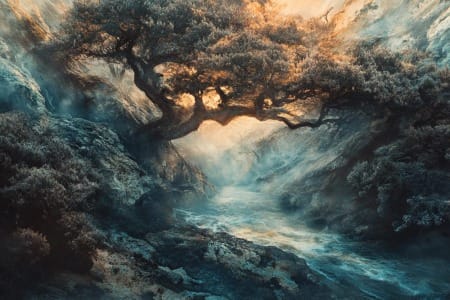
In contrast, the purpose of commercial photography is client-driven. The photographer’s role is to meet specific business objectives, such as promoting a product or service, increasing brand awareness, or enhancing a company’s image. Here, the intention is often marketing-focused, with images designed to persuade, inform, or attract potential customers. Commercial photographers follow a brief provided by the client and ensure the images align with branding and messaging goals.
b. Creative Control
Creative control is another major difference between fine art and commercial photography. Fine art photography allows the photographer complete freedom to explore their own ideas, techniques, and aesthetic choices. There are no restrictions imposed by external forces, enabling the artist to push boundaries, experiment with different styles, and fully realize their vision.
In commercial photography, however, the photographer’s creative freedom is often limited by the client’s needs and objectives. Commercial photographers must work within set guidelines, whether it’s adhering to a brand’s color scheme, following a specific composition style, or ensuring that the product or model is showcased according to the client’s preferences. While creativity is still important, it must be balanced with practicality and the ultimate goal of satisfying the client.
c. Audience
The audience for fine art photography and commercial photography differs significantly. Fine art photography is typically aimed at a more niche audience, including art collectors, gallery visitors, and connoisseurs who appreciate photography as a form of art. These individuals are often looking for meaning, innovation, or aesthetic beauty in the work. The images are usually showcased in galleries, museums, or exhibitions and may be sold as limited-edition prints.
In contrast, commercial photography targets a much broader audience, typically consumers or business clients. The aim is to create images that appeal to specific demographics and encourage engagement with the product or service being advertised. These photos are often distributed through mass media channels, such as websites, advertisements, and magazines, making them widely accessible to the general public.
Areas of Overlap Between Fine Art and Commercial Photography
a. Professionalism and Skill
Although fine art photography and commercial photography have different goals, they both require a high level of technical skill and professionalism. In both fields, photographers must master their craft, including camera operation, lighting, composition, and post-processing techniques. Whether creating a fine art photograph for an exhibition or shooting a commercial campaign for a brand, the technical foundation remains critical to producing high-quality images. Attention to detail, creative vision, and the ability to work with advanced equipment are essential in both genres.
Many photographers develop skills that are transferable between fine art and commercial photography. For instance, a fine art photographer might apply their understanding of light and shadow to a commercial portrait shoot, or a commercial photographer might use their technical expertise to create more concept-driven fine art projects. Both disciplines demand a keen eye and a thorough understanding of photographic principles.
b. Marketing and Promotion
Both fine art photographers and commercial photographers need to market their work effectively, though their audiences and platforms may differ. Fine art photography often involves building a reputation within the art world, promoting exhibitions, and selling limited-edition prints to collectors. This type of marketing requires networking with galleries, participating in exhibitions, and creating an artist brand that resonates with art enthusiasts and curators.
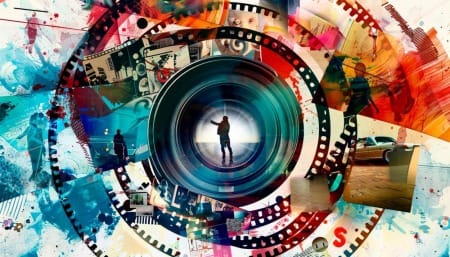
Commercial photographers, on the other hand, focus on attracting business clients. They market themselves by showcasing portfolios that highlight their ability to deliver client-focused work, often using websites, social media, and industry networks to attract new business. Despite the differences in audience, both types of photographers must understand self-promotion, networking, and portfolio building to succeed.
c. Use of Post-Processing and Technology
Post-processing is another area where fine art and commercial photography overlap. In both fields, photographers use software like Adobe Photoshop or Lightroom to enhance their images. Fine art photographers may apply creative editing to achieve a specific look or convey an abstract idea, while commercial photographers often use editing to perfect product images or ensure consistency across a marketing campaign. The creative use of post-processing techniques is common in both realms, though the intent behind the edits may differ depending on the project.
Choosing the Right Path for Your Photography Career
a. Personal Goals and Passion
When deciding between fine art photography and commercial photography, it’s essential to consider your personal goals and passion. Fine art photography is ideal for photographers who are driven by creative expression and the desire to convey personal ideas or emotions through their work. If you are passionate about producing images that reflect your artistic vision, exploring abstract concepts, or telling unique stories, fine art photography may be the perfect avenue for you. It offers the freedom to experiment without the constraints of client needs, allowing you to fully explore your own style and themes.
On the other hand, commercial photography is more suited to those who thrive in structured environments, enjoy collaborating with clients, and are motivated by the challenge of creating images that meet specific business or marketing objectives. If you find fulfillment in problem-solving and producing work that directly impacts a brand’s success or consumer engagement, commercial photography can offer a rewarding career path.
b. Desired Level of Creative Freedom
The level of creative freedom is another critical factor in choosing between fine art photography and commercial photography. In fine art photography, you have total control over your subject matter, composition, and post-processing techniques. You can take risks, break traditional rules, and pursue bold artistic choices without worrying about external approval. This freedom allows you to explore photography as an art form, continually evolving and redefining your style.
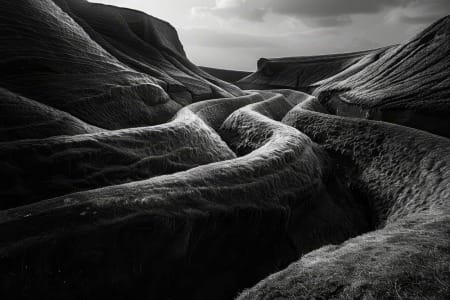
In contrast, commercial photography often requires balancing creativity with practicality. The photographer must adhere to the client's vision and project requirements, which can limit artistic freedom. However, many commercial photographers still find ways to infuse their personal style into their work while meeting the project’s goals, making this field appealing to those who enjoy collaborative creativity.
c. Financial Considerations
Another aspect to weigh is the financial potential of each field. Commercial photography generally offers more consistent and predictable income, as it is driven by contracts, projects, and client work. Fine art photography, on the other hand, often requires building a reputation and finding collectors over time, which can make income streams less reliable in the early stages of a career.
Conclusion
In conclusion, both fine art photography and commercial photography offer unique opportunities and challenges, each appealing to different aspects of a photographer’s creative and professional aspirations. Fine art photography is centered around personal expression, offering complete artistic freedom and the chance to communicate deep emotions, ideas, and abstract concepts through visual imagery. It provides a platform for photographers to explore their creativity without the constraints of external demands, making it ideal for those who are driven by artistic vision and conceptual exploration.
On the other hand, commercial photography focuses on meeting the needs of clients, whether for marketing, advertising, or product promotion. It is more structured and purpose-driven, requiring the photographer to balance creativity with practicality to achieve specific business objectives. Commercial photography can offer greater financial stability and consistent work, making it an attractive career choice for those who enjoy collaboration and producing impactful images for a wide audience.
Despite their differences, both fields demand a high level of skill, professionalism, and creativity. Many photographers find opportunities for crossover between the two, applying techniques from one discipline to enhance their work in the other. Ultimately, the choice between fine art photography and commercial photography depends on your personal goals, the level of creative freedom you seek, and your desired approach to the business side of photography. Whether you pursue one path exclusively or blend both, understanding these differences can help you navigate your photography career more effectively.
Thank you for visiting our site and being part of this journey with us! We rely on the generous support of visitors like you to continue providing high-quality. Your donation, no matter the size, helps us maintain the website and create more valuable resources for everyone.


